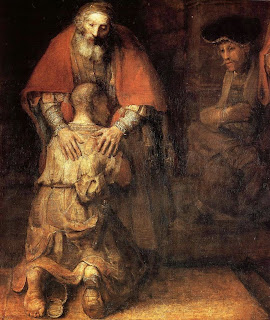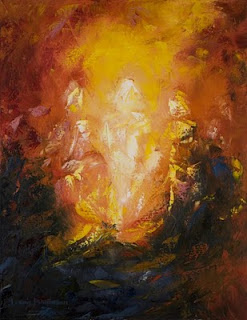Thanks for the question and for permission to share it here. Canon 603 has some important and non-negotiable terms that serve as markers or defining qualities for a solitary eremitical life --- whether this is lived in the name of the Church (603.2) or not. As I approach these qualities I recognize that they point to whole worlds the solitary hermit explores rather than being terms with single, easily definable meanings. They are doorways to Mystery, not ends in themselves. "The silence of solitude" is one of these terms because it is more than the sum of its parts. By that I mean that c 603 does not merely say "silence and solitude" which would tend to refer primarily to external silence and physical solitude. Instead, "the silence of solitude" refers to the fruit of a life of external silence and physical solitude, coupled with assiduous prayer and penance, stricter separation from the world, and the Evangelical Counsels, all lived for the praise of God, and the salvation of others.
Yes, a hermit lives a contemplative life in external silence and physical solitude but this contemplative life bears fruit in what the canon refers to as the silence of solitude. This fruit differs from mere external silence and physical solitude. For instance, external silence may mean the absence or relative absence of created sound. It refers to an element of a context required for living one's hermit life. Physical solitude tends to mean the absence or relative absence of others in the hermitage and the isolated or relatively isolated location of the hermitage itself. But note that these merely set the stage for the eremitical life; they don't constitute it --- at least not as the church understands and codifies it. One adds the other terms of the canon and lives into them more and more deeply. As one does that, the result will be "the silence of solitude" where the hermit grows more and more profoundly related to God and others in God.
When this happens the isolation of physical solitude is transcended in an inner relatedness in God and becomes a form of community --- it has a sense of being with and for others through and in external silence and physical solitude. Silence begins to speak and, in particular, in the compassion that develops through one's prayer, "loneliness", and the inner work made both possible and necessary by these, one begins to hear and be a response to the cry of anguish of the world around one.
It is fascinating to me that the silence of solitude represents a form of deep communion and community. That seems to be the complete opposite of "silence and solitude". Really though, it is radically paradoxical like many truly Christian realities. Note too that "the silence of solitude" points to the healing and quieting of one's own woundedness precisely so that compassion and the capacity for compassion may develop within oneself. This can require significant inner work as well as assiduous prayer, and gradually, as such work is accomplished, there is a quieting of personal anguish allowing one to open oneself to the anguish of the world around one. When I hear the phrase "the silence of solitude", the word silence there reminds me of this inner healing where one moves from being an isolated scream of anguish incapable of being truly open to the pain of others and instead, through the grace of God, becomes a kind of compassionate listening presence in the world.This is a little of what I mean by my encouragement that you explore the difference between a life of silence and solitude and a life characterized by the silence of solitude. Canon 603 calls for the latter even though it includes and requires the former!! The silence of solitude is a fruit of the eremitical life. It is more than the sum of its parts since those parts (external silence and physical solitude) could just as well belong to a life given to unhealthy withdrawal from others and the silence or muteness of deep woundedness as to a life of wholeness and compassion! Hermits commit to exploring the depths of the silence of solitude and living it more and more profoundly for the sake of a wounded and noisy world. As they do they will discover it is not merely a context for living their eremitical lives, but a goal of that life and a charism or gift that they offer to this same wounded and noisy world.
Please get back to me if this is not helpful or helpful enough.
.jpg)








.jpg)















.jpg)























